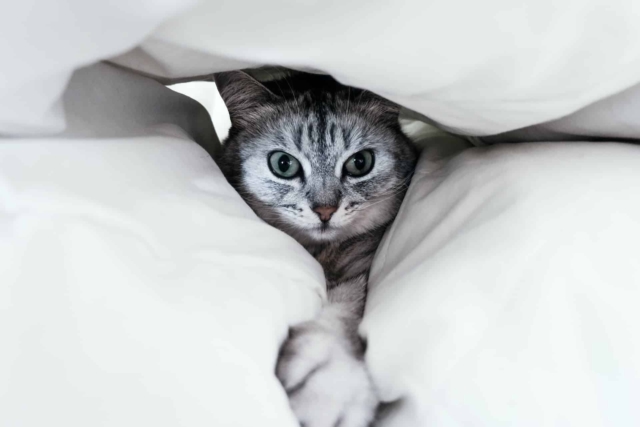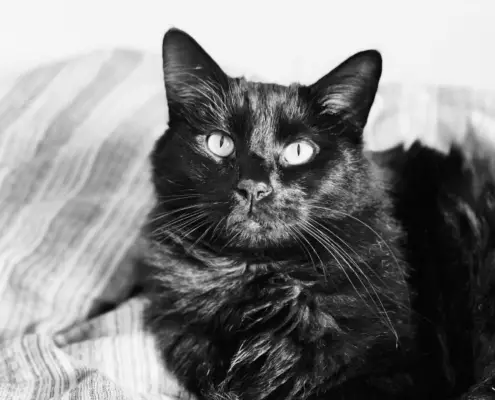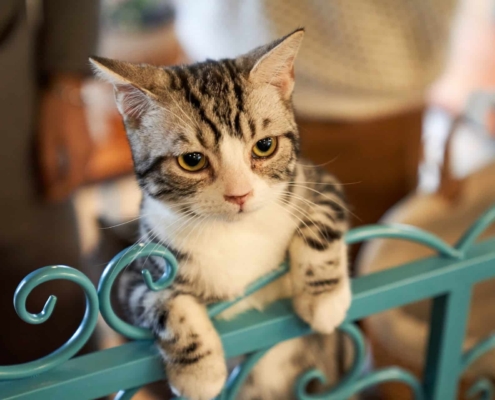
Cats have always been known for their mysterious and sometimes eccentric behavior. From zooming around the house at lightning speed to pouncing on invisible prey, their antics can often leave us wondering why they act the way they do. To truly understand why cats go “crazy,” it’s important to delve into their natural instincts and behaviors.
What is Considered “Crazy” Behavior in Cats?
“Crazy” behavior in cats can encompass a wide range of actions, from sudden bursts of energy to obsessive grooming or destructive scratching. It’s important to note that what may seem “crazy” to us is often a normal expression of feline behavior. Cats are highly active and curious animals, and their seemingly strange actions are often rooted in their instincts.
Common Reasons Why Cats Go Crazy
There are several common reasons why cats exhibit “crazy” behavior. One of the most prevalent causes is simply a surplus of energy. Cats are natural hunters, and when they don’t have an outlet for their predatory instincts, they may resort to what we perceive as “crazy” behavior. Another reason could be boredom or lack of mental stimulation. Cats are intelligent animals that require mental and physical stimulation to stay happy and healthy. Without proper enrichment, they may become restless and display unusual behaviors.
Play Behaviors in Cats
Play is an essential aspect of a cat’s life. It helps them hone their hunting skills and provides an outlet for their energy. Play behaviors in cats can often appear “crazy” to us, but they serve an important purpose. From chasing toys to wrestling with imaginary foes, cats engage in play to keep themselves entertained and mentally stimulated. Providing a variety of interactive toys and play sessions can help channel their energy and prevent them from resorting to destructive behaviors.
Hunting Instincts and Their Impact on Feline Behavior
Cats are natural-born hunters, and their hunting instincts play a significant role in their behavior. Even domesticated cats retain their innate desire to stalk, chase, and capture prey. When these instincts are not fulfilled, they may manifest as “crazy” behavior. This can include zooming around the house, pouncing on unsuspecting objects, or even engaging in aggressive play. Understanding and acknowledging their hunting instincts can help us redirect their behavior in a more appropriate and satisfying manner.
Environmental Factors That Can Contribute to Crazy Behavior in Cats
The environment in which a cat lives can greatly influence their behavior. Factors such as a lack of vertical space, limited hiding spots, or a lack of visual stimulation can contribute to “crazy” behavior. Cats require a stimulating environment that mimics their natural habitat. Providing perches, hiding spots, and interactive toys can help alleviate their restlessness and prevent them from engaging in destructive or hyperactive behaviors.
How to Redirect and Manage Crazy Behavior in Cats
Redirecting and managing “crazy” behavior in cats requires a combination of patience, understanding, and proactive measures. One of the most effective ways to redirect their energy is through play. Engaging in interactive play sessions with appropriate toys can help satisfy their hunting instincts and provide an outlet for their energy. Additionally, providing scratching posts and toys that mimic prey can help redirect their destructive behaviors onto more appropriate outlets.
Cat Toys and Enrichment Activities to Alleviate Crazy Behavior
To alleviate “crazy” behavior in cats, it’s important to provide them with a variety of toys and enrichment activities. Interactive toys that can be filled with treats or catnip can keep them engaged and mentally stimulated. Puzzle feeders can also provide mental enrichment, as they require cats to work for their food. Additionally, creating an enriching environment with perches, scratching posts, and hiding spots can help alleviate their restlessness and prevent them from engaging in undesirable behaviors.
When to Seek Professional Help for Your Cat’s Crazy Behavior
While most instances of “crazy” behavior in cats can be managed through environmental enrichment and redirection techniques, there are cases where professional help may be necessary. If your cat’s behavior becomes excessively aggressive, self-destructive, or if they show signs of distress, it’s crucial to consult with a veterinarian or animal behaviorist. These professionals can assess your cat’s behavior, identify any underlying medical issues, and provide guidance on how to address and manage their behavior effectively.
Conclusion
Cats may have their moments of “crazy” behavior, but understanding the reasons behind their actions can help us better respond to their needs. From play behaviors to hunting instincts and environmental factors, there is often a logical explanation behind their seemingly unusual actions. By providing appropriate outlets for their energy, mental stimulation, and a stimulating environment, we can help prevent and manage their “crazy” behavior in a way that promotes their overall well-being and happiness.
If you enjoyed my article, I would appreciate you sharing it with your network.

Sima Ndlebe
Sima writes for CatBuzz. He is interested in Cats, Health and Fitness, and Entrepreneurship.
Published: 6 December 2023



